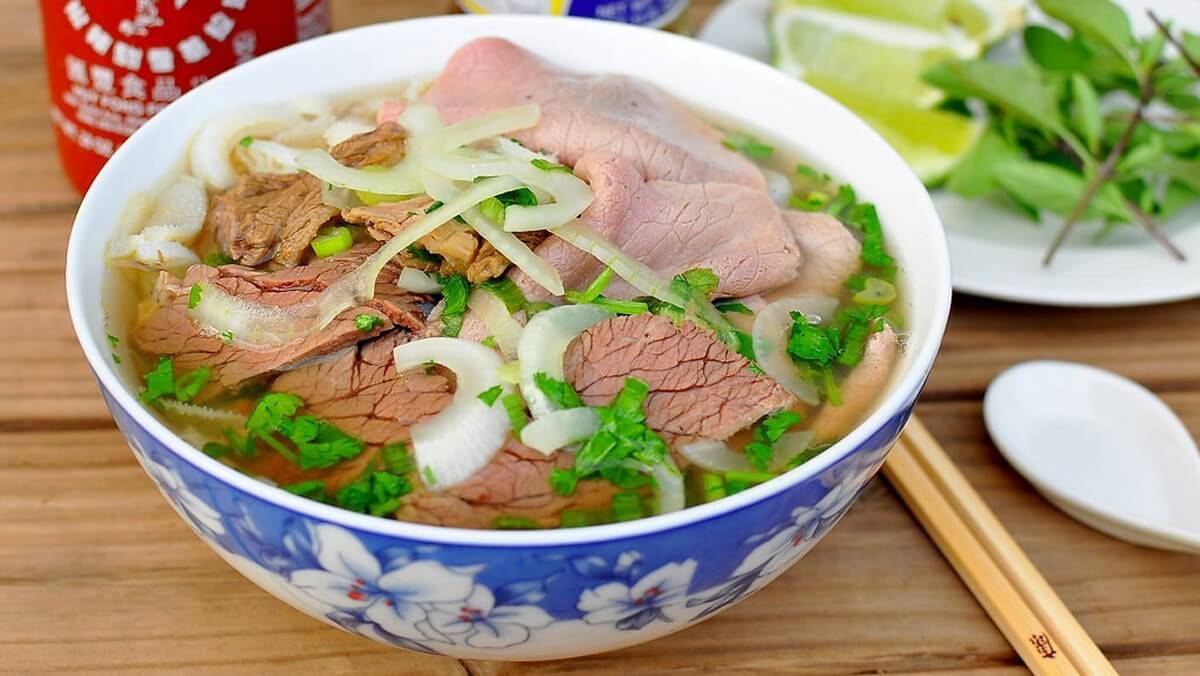Pho has changed much during its nearly 100-year history. At its birth, pho was basically just boiled beef, noodles and broth. Inventive cooks then developed the raw beef version (pho bo tai) and chicken pho (pho ga), and during wartime when beef was scarce, they made pork pho (pho heo). Though these and other variations exist, most people define pho as a beefy affair.
What makes pho universally loved?
How pho came to be is a murky issue. While scholars, cooks and diners agree that pho was invented in the early part of the 20th century in northern Vietnam, no one is certain of the specifics.
In 2003, pho’s mysterious beginnings were debated and investigated at several events in Hanoi. At one seminar, the discussion focused on the word itself. Some proposed that “pho” was a Vietnamese corruption of the French feu (fire), as in the classic boiled dinner pot-au-feu, which the French colonialists introduced to Vietnam.
In a follow-up publication, seminar organizer Didier Corlou, executive chef of the Sofitel Métropole Hotel in Hanoi, noted that charring the onion and ginger for pho broth is similar to the French method of adding roasted onion to pot-au-feu for extra brown coloring. This use of charred ingredients is one thing that sets pho apart from other Asian noodle soups.
As for the birthplace of pho, a couple of theories point to Nam Dinh province, southwest of Hanoi. One argument is that ingenious cooks in Nam Dinh City (once a major textile center) satisfied the gastronomic desires of Vietnamese and French residents by inventing the dish using local ingredients (e.g., rice noodles) and adding du boeuf for a bit of foreign extravagance. (Before the French occupation, cows in Vietnam were cherished work animals, not food sources.)
Another theory attempted to trace pho to the small impoverished village of Van Cu in Nam Dinh province. During the 20th century, as a means of survival, nearly all Van Cu villagers turned to making and peddling pho 50 miles away in Hanoi. Consequently, many pho vendors in the capital today are from that village.
In 1954, under the Geneva Accords, Vietnam was split in two. Many northerners migrated southward, bringing their pho culture with them. In democratic South Vietnam, pho made a brash turn away from its conservative northern traditions.
It was embellished with more of everything — meat, noodles and broth. The practice of garnishing pho with bean sprouts, ngo gai (thorny cilantro), hung que (Thai/Asian basil) and lime was introduced. Diners also started adding tuong (bean sauce/hoisin sauce) directly to their bowls. This freewheeling, adulterated incarnation reflected the southern Vietnamese penchant for eating wildly complicated food and lots of it.
Whether you enjoy your next bowl of pho at home, in a restaurant or at a noodle bar, you’ll be part of a special culinary and cultural transformation.
By Andrea Q. Nguyen
Posted Wed, June 9, 2004, copyright San Jose Mercury News.


